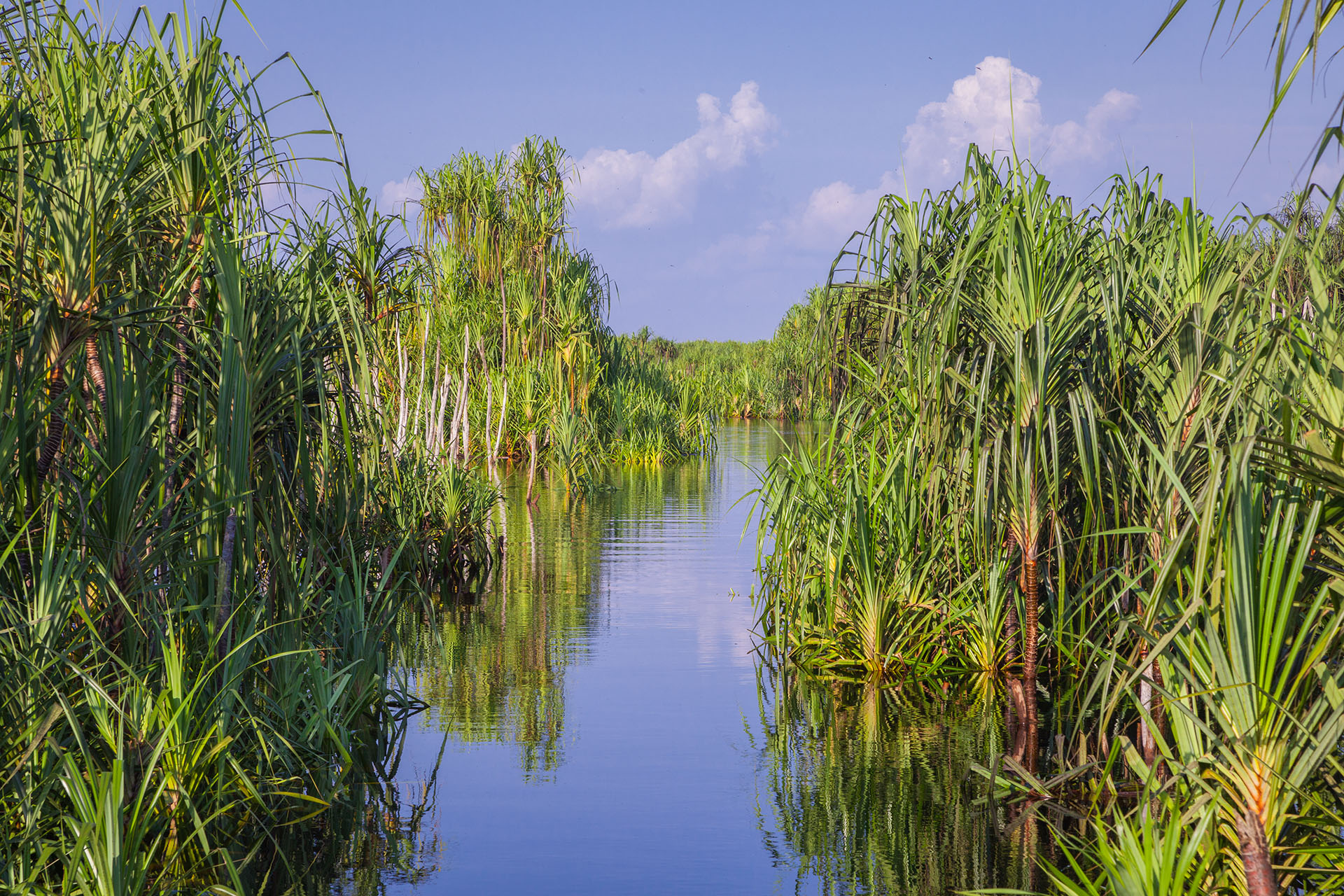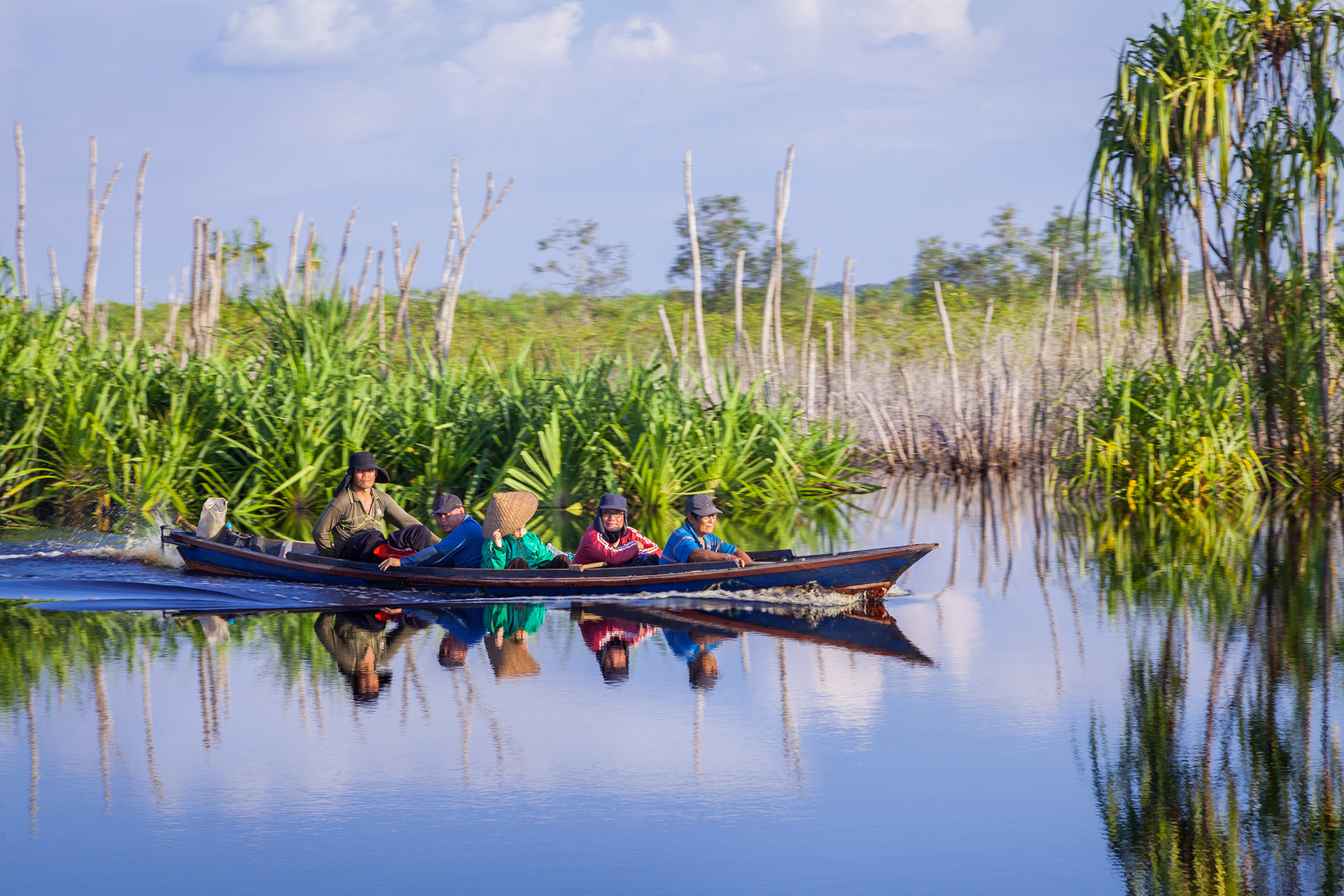In recent years, nature-based solutions have been recognized to provide cost-effective, climate mitigation, with the potential to stabilize global warming to below 2°C by 2030. However, with the intensification of dry seasons and wildfires, countries with tropical peatlands in Southeast Asia can learn from examples in the Netherlands to address negative climate impacts and preserve biodiversity. Successful examples of nature-based solutions for tropical peatlands exist, but are relatively limited in scope.
The Dutch Innovation Programme in the Netherlands was designed to address land subsidence caused by peat degradation. This Programme experiments with wet cultures to provide alternatives for dairy farmers, currently the largest land users on lowland peat in the Netherlands. Options include alternative cattle feed, in addition to trails with peat moss that sequester carbon for the atmosphere and by doing so, restore peat layers. These methods could also be used for carbon offsetting in pristine tropical peat swamps.
Threats during COVID-19
For the tropical peatlands of Southeast Asia, one of the key challenges is degradation from the conversion to palm oil, pulpwood and food crop production. This has meant high exposure to fires and the resulting rapid degradation of the peat and loss of carbon, making tropical peat the single largest source of emissions in Indonesia. In 2015, fires caused $16 billion (US) of damage and losses. This is more than double that of the 2004 tsunami and equal to 1.8% of Indonesia’s GDP. In addition, the haze exposure from Indonesia's fire activity has led to 37,000 deaths. This exposure is alarming, set against the present COVID-19 pandemic, which has now reached communities dependent on global peatlands. These communities, exposed to toxic haze from peatland degradation, are particularly vulnerable to the virus. According to new research, an increase of only 1 μg/m3 of air is associated with a 15% increase in the COVID-19 death rate.
Paludiculture
As in the Netherlands, wet agriculture and forestry on peatlands, known as paludiculture, can offer an alternative to palm oil in tropical peatlands. Paludiculture has many benefits including decreasing emissions from peat soil; allowing the production of clean biomass that does not compete with food production; and, restoring and maintaining habitats for rare and threatened species. The use of biofuels in current farming practices results in higher emissions than fossil fuels. Drained peatlands should, therefore, not be stocked with biomass energy crops, however, major challenges have emerged.

Major challenges
In the case of peat restoration as currently implemented in Indonesia, costs tend to be high, yields of paludicultural commodities have been insufficient and weak supply chains have hampered further development. Based on the experiences of the Dutch Innovation Programme, the importance of farm experimentation and building on local, social capital, as well as strong links with potential markets is critical. In the case of Indonesia, this can be strengthened through blended finance, using public finance to de-risk the initial investment.
Nature based solutions
In Indonesia, several options, developed by local communities over centuries, exist that offer nature-based solutions to preserving tropical peatlands. These have the potential to restore peatlands to sequester carbon, secure habitat for wildlife and livelihoods for communities.
Sago palms (Metroxylon sagu) grow naturally on 4.5 million hectares in Indonesia. These palms are typically found in areas unsuited to other forms of agriculture and the nutritional deficiencies of the food can often be compensated by other readily available crops such as fish and bushmeat. Sago palms could yield up to 25 tons of starch per hectare per year. UNEP is working in partnership with Kemitraan, an Indonesian non-governmental organization, and Wageningen University to strengthen private-sector processing firms to work with communities to ensure success for community-based production in the region.
Gemor (Nothaphoebe coriacea Kosterm) is a tree that grows in peat swamp with bark that is harvested, processed and commonly used in the production of biological mosquito coils since it contains pyrethrin. Pyrethrins are used in many varieties of bio-insecticide, fogging products and in some pet products. The demand for gemor is increasing, but as it is currently mainly collected from forests, efforts are currently underway to plant it in peat swamps.
Rattan-based systems, one of the oldest, most complex agroforestry systems in Indonesia, have emerged in peatlands that are cleared in a 25-year cycle for food production. Cultivation involves cutting and burning areas of forest to prepare for temporary cultivation and sowing rattan in the recovering forest vegetation. These areas have become known as rattan agroforests, producing stems used most commonly in furniture, as well as products including carpets, walking sticks and ropes. Some communities use the fruits and leaves of rattan in traditional medicines.
Gelam (Melaleuca leucadendra) is a tree that grows spontaneously on degraded peatlands. The stands are managed extensively as the trees are fire resistant. Widespread, repeated fires have transformed the landscape into uniform stands of fire-resistant gelam forests and thickets, open savannas and grasslands. These new types of land cover are degrading, but local communities have rapidly adapted to the changing environment by harvesting timber from the gelam stands. UNEP is developing and restructuring the gelam as a market for wood pellets.
Restoring the peat swamps ecosystems
The systems noted above allow for rewetting, and then restoring, the ecosystem in peat swamps. This requires a large-scale, integrated fire management control system and the rewetting of degraded peatlands through large-scale, labor-intensive public works programs. It also requires building on existing social capital through handils, an indigenous land-use system that refers to the hand-dug, man-made waterways used to gain access to farming fields in these areas, as well as to the associations that manage the natural resources, canals and agricultural lands. These associations practice a form of democratic governance, guarding the interests of their members. They are ideally suited to organize carbon farming through revegetation on rewetted peatland, with great potential to function as institutions for regional, peat, dome-based water management. This also serves to suppress haze exposure in communities and reduce the risks of COVID-19 related mortality.
Through REDD+ results-based payments, financial resources could be made available to initiate rewetting for revegetation and integrated fire management. To accelerate rehabilitation and reduce fires, community-based employment schemes for integrated fire management are opportune now as economic impacts are emerging from the global COVID-19 pandemic, in particular the collapse of agricultural commodity prices. As well, increased unemployment levels are rising due to, and aggravated by, substantial return migration to rural areas by laid-off employees. The impact of unemployment is likely to accelerate deforestation. As such, investment in nature-based solutions can ameliorate post-COVID employment challenges with climate policies that address the unsustainable use of tropical peatlands.
The effective design of REDD+ emission reduction options, blended with private sector financing, can lead to the restoration of the carbon sequestration ability of tropical peatlands, while also reducing the risk of COVID-19 infections in the coming years.
